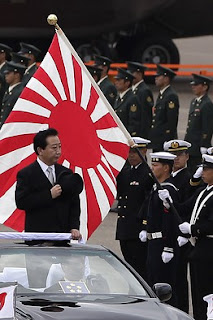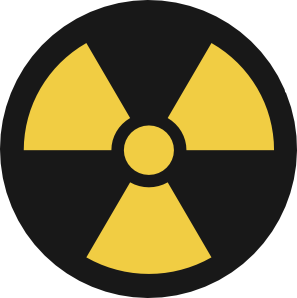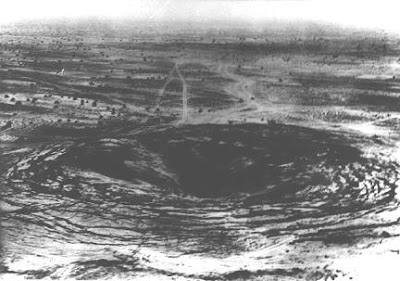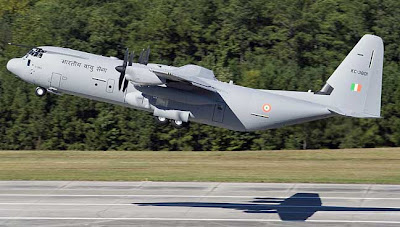On January 21, 2008 an Indian space launch vehicle lifted off from
the Sriharikota spaceport on the Indian Ocean to put into space Israel’s
most sophisticated spy satellite ever launched, the Polaris. The
commercial launch of Polaris by the Indian Space Research Organization
(ISRO) underscored the growing military and intelligence connections
between Israel and India. The United States helped inspire this
relationship and has a strong interest in its success. Though unique in
the military cooperation realm, this is but one of several evolving
relationships between Israel and great or emerging powers that deserves
attention.
Israel and India only established formal diplomatic relations in 1991 with the Madrid Arab-Israeli peace process creating a favorable diplomatic context for New Delhi to move beyond informal contacts that existed before 1990. Then President Bush’s National Security Council staff worked closely behind the scenes with Prime Minister Rao’s embassy in Washington to make this happen. Military-to-military contacts and defense interaction followed.
In the 1990s, China was Israel’s most important arms export market. The signature weapons system in the relationship was the Phalcon airborne warning and control system (AWACs). This system used U.S. technology in its development and was thus subject to U.S. export oversight. As the 1990s developed and tensions rose in the Taiwan Strait, Washington pressed the Ministry of Defense in Tel Aviv to cut back on its ties to Beijing. The Phalcon became a bone of contention. Of course, this had serious economic costs for Israel.
In 2000, Prime Minister Ehud Barak pressed President Clinton for relief. Clinton came back with an idea — if the United States did not like Israeli-Chinese arms deals, it had no objection to Israeli-Indian arms sales since they did not raise the potential issues Taiwan raised. More explicitly, selling the Phalcon to India would not meet objections in Washington. Clinton made clear the United States would not raise concerns about the arms balance with Pakistan since it has no commitment to the defense of Pakistan and the conventional balance of forces was already tipped in India’s favor in 2000. The two leaders talked the issues through on the margins of the Israeli-Palestinian summit at Camp David in mid-2000. They reached agreement and Israel got a green light from Washington to court India.
Now, almost eight years later, India is Israel’s largest arms export market in the world. Sales in 2006 were $1.5 billion, roughly the same as in each of the preceding three years as well. This from Israel’s total arms sales of $4.2 billion in 2006; the India market comprised more than one-third. Sales included upgrades for MIG 21 aircraft and T72 tanks originally purchased from Russia, the Barak anti-missile ship defense system, communications equipment, laser-guided munitions and the Phalcon. The first of five Phalcon AWACs were delivered in 2007. Co-partnerships are now developing between Indian and Israeli firms.
Israeli arms experts are also seeking to sell the Arrow II anti-tactical ballistic missile system to India, which would require U.S. approval due to shared technology in the ATBM system. This would give India a significant missile defense system. The Green Pine radar system has already been sold to India which is a critical component of the overall ATBM system.
The Polaris satellite is Israel’s first equipped with synthetic aperture radar that allows it to take high resolution imagery in all weather conditions. The radar looks through clouds or fog to see objects on the ground. Launched from south India into a polar orbit it offers new coverage of sites in Iran for Israeli defense planners. According to Indian press sources, two more such satellites will be launched by ISRO for Israel in the next few years. The Iranian nuclear program will probably be the principal collection target for these systems. Israel retains full operational control of the Polaris system including what targets are imaged. It is unknown if any intelligence derived from the imagery is shared with third parties.
Critics of the Indian-U.S. civilian nuclear deal negotiated by President Bush and Prime Minister Singh have complained about India’s ties to Iran. India does have important equities with Iran, not the least because India has the second largest population of Shia Muslims in the world after Iran. But there is no comparison between the sophisticated military relationship between India and Israel and the weak connections between India and Iran on security issues.
According to ISRO officials I talked to in Bangalore in February the launch of the Polaris produced a serious protest from Iran to India. But they were clear ISRO would stick with its Israeli commercial connection. They also said India will launch its own first radar-imaging satellite later this year. The Indian Army Chief of Staff, General Depak Kapoor, has said publicly that India’s imagery satellite capability is now critical to the nation’s early warning capability with regards to both Pakistan and China.
The Israeli-Indian connection in commercial military and space intelligence fields is good for both countries and for the United States. In less than two decades since diplomatic ties were upgraded, New Delhi and Jerusalem have come a long way. Camp David was a pivotal moment on the way. The cooperation between Israel and India, with U.S. blessing, provides important security to two democratic countries in a very unstable part of the world.
Israel and India only established formal diplomatic relations in 1991 with the Madrid Arab-Israeli peace process creating a favorable diplomatic context for New Delhi to move beyond informal contacts that existed before 1990. Then President Bush’s National Security Council staff worked closely behind the scenes with Prime Minister Rao’s embassy in Washington to make this happen. Military-to-military contacts and defense interaction followed.
In the 1990s, China was Israel’s most important arms export market. The signature weapons system in the relationship was the Phalcon airborne warning and control system (AWACs). This system used U.S. technology in its development and was thus subject to U.S. export oversight. As the 1990s developed and tensions rose in the Taiwan Strait, Washington pressed the Ministry of Defense in Tel Aviv to cut back on its ties to Beijing. The Phalcon became a bone of contention. Of course, this had serious economic costs for Israel.
In 2000, Prime Minister Ehud Barak pressed President Clinton for relief. Clinton came back with an idea — if the United States did not like Israeli-Chinese arms deals, it had no objection to Israeli-Indian arms sales since they did not raise the potential issues Taiwan raised. More explicitly, selling the Phalcon to India would not meet objections in Washington. Clinton made clear the United States would not raise concerns about the arms balance with Pakistan since it has no commitment to the defense of Pakistan and the conventional balance of forces was already tipped in India’s favor in 2000. The two leaders talked the issues through on the margins of the Israeli-Palestinian summit at Camp David in mid-2000. They reached agreement and Israel got a green light from Washington to court India.
Now, almost eight years later, India is Israel’s largest arms export market in the world. Sales in 2006 were $1.5 billion, roughly the same as in each of the preceding three years as well. This from Israel’s total arms sales of $4.2 billion in 2006; the India market comprised more than one-third. Sales included upgrades for MIG 21 aircraft and T72 tanks originally purchased from Russia, the Barak anti-missile ship defense system, communications equipment, laser-guided munitions and the Phalcon. The first of five Phalcon AWACs were delivered in 2007. Co-partnerships are now developing between Indian and Israeli firms.
Israeli arms experts are also seeking to sell the Arrow II anti-tactical ballistic missile system to India, which would require U.S. approval due to shared technology in the ATBM system. This would give India a significant missile defense system. The Green Pine radar system has already been sold to India which is a critical component of the overall ATBM system.
The Polaris satellite is Israel’s first equipped with synthetic aperture radar that allows it to take high resolution imagery in all weather conditions. The radar looks through clouds or fog to see objects on the ground. Launched from south India into a polar orbit it offers new coverage of sites in Iran for Israeli defense planners. According to Indian press sources, two more such satellites will be launched by ISRO for Israel in the next few years. The Iranian nuclear program will probably be the principal collection target for these systems. Israel retains full operational control of the Polaris system including what targets are imaged. It is unknown if any intelligence derived from the imagery is shared with third parties.
Critics of the Indian-U.S. civilian nuclear deal negotiated by President Bush and Prime Minister Singh have complained about India’s ties to Iran. India does have important equities with Iran, not the least because India has the second largest population of Shia Muslims in the world after Iran. But there is no comparison between the sophisticated military relationship between India and Israel and the weak connections between India and Iran on security issues.
According to ISRO officials I talked to in Bangalore in February the launch of the Polaris produced a serious protest from Iran to India. But they were clear ISRO would stick with its Israeli commercial connection. They also said India will launch its own first radar-imaging satellite later this year. The Indian Army Chief of Staff, General Depak Kapoor, has said publicly that India’s imagery satellite capability is now critical to the nation’s early warning capability with regards to both Pakistan and China.
The Israeli-Indian connection in commercial military and space intelligence fields is good for both countries and for the United States. In less than two decades since diplomatic ties were upgraded, New Delhi and Jerusalem have come a long way. Camp David was a pivotal moment on the way. The cooperation between Israel and India, with U.S. blessing, provides important security to two democratic countries in a very unstable part of the world.
















